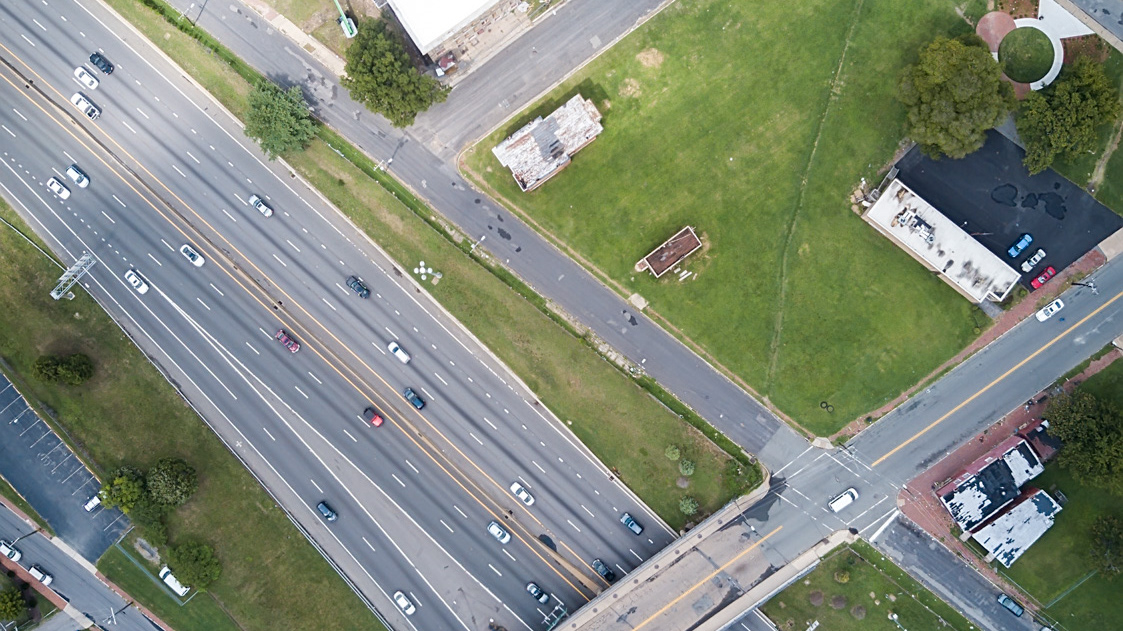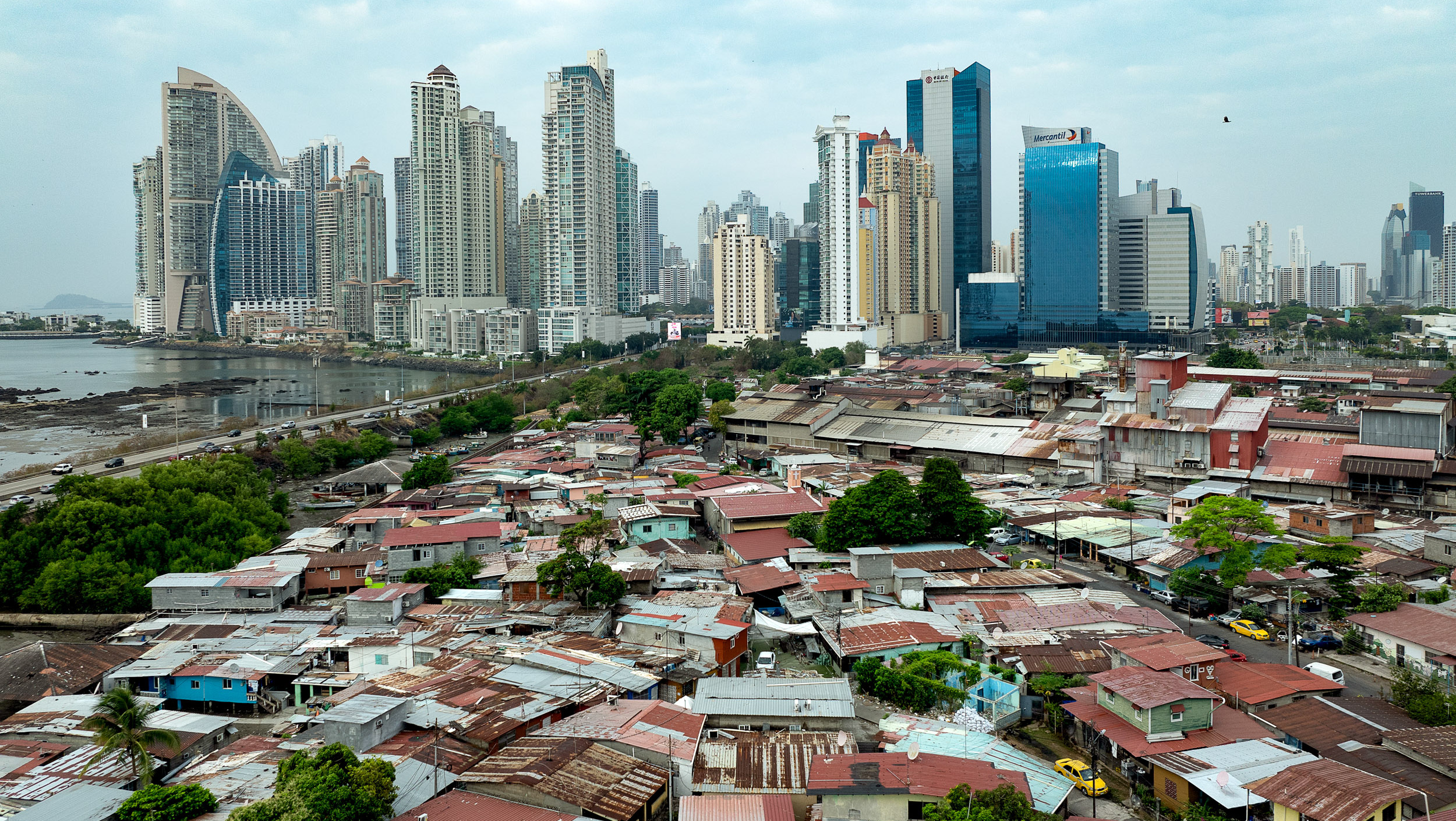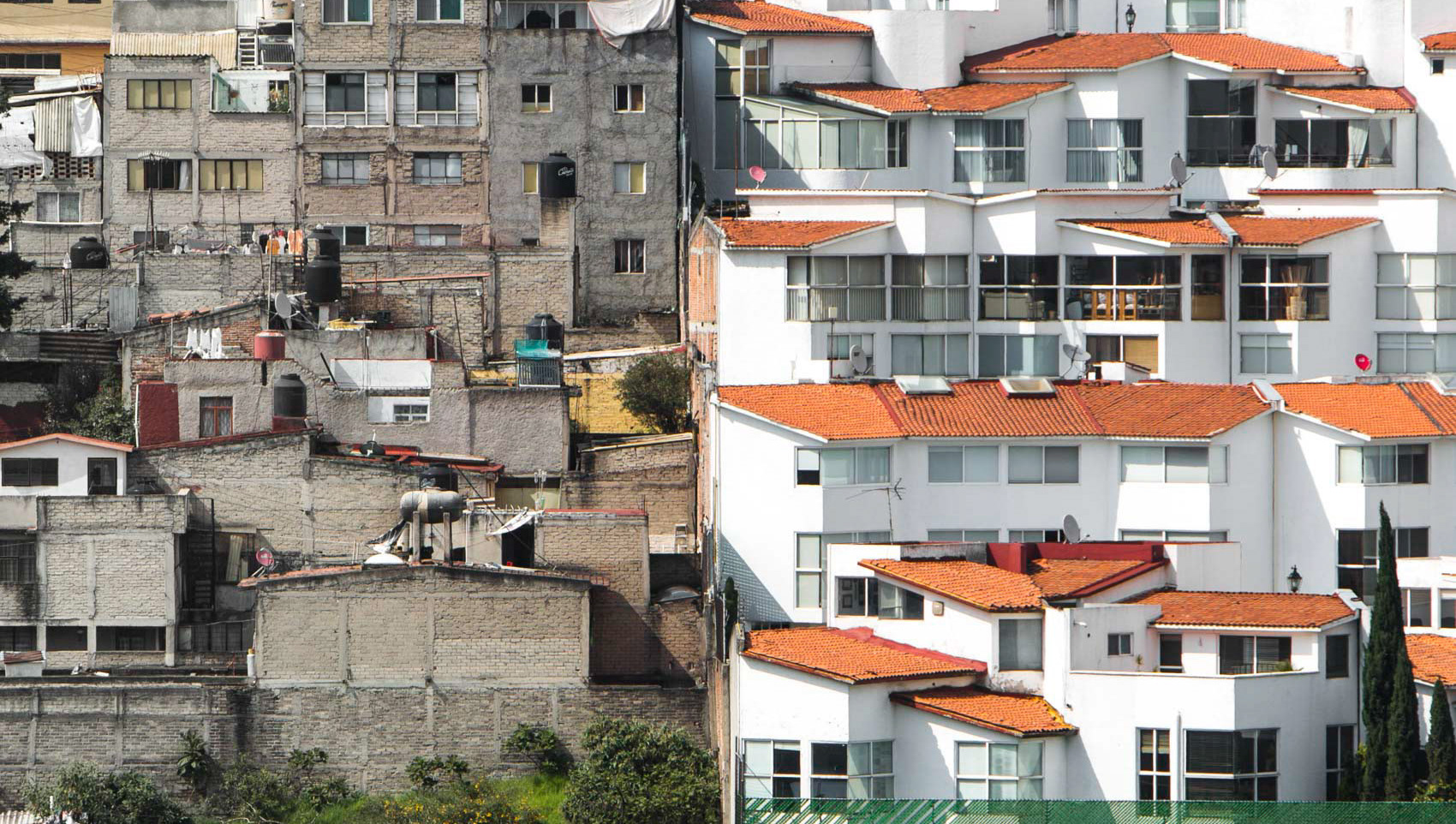Woodward Avenue is a major north-south route in Detroit, and the very first paved road in America. In certain areas, like this one near Highland Park, it's easy to see which neighborhoods are suffering under Detroit's decline.
Some neighborhoods, like this one near Highland Park, are totally decimated. Other neighborhoods nearby, like this one adjacent, seem to be doing much better.
(Above) Grosse Point Park is one of the wealthiest neighborhoods in Detroit, but it's not technically within the city's boundaries. The Fox Canal separates it from the now-sparsely populated Jefferson Chalmers neighborhood.
This brick barrier on Goethe Ave. separates Detroit from Grosse Pointe Park.
Kercheval Avenue is the main entryway into Grosse Pointe Park, leading directly to the Chrysler plant and, a little further on, downtown Detroit. The residents of Grosse Pointe Park have tried for years to barricade this gateway, including using snow, oversized planters, sheds (seen in center right in this photo), and finally, a narrow roundabout.
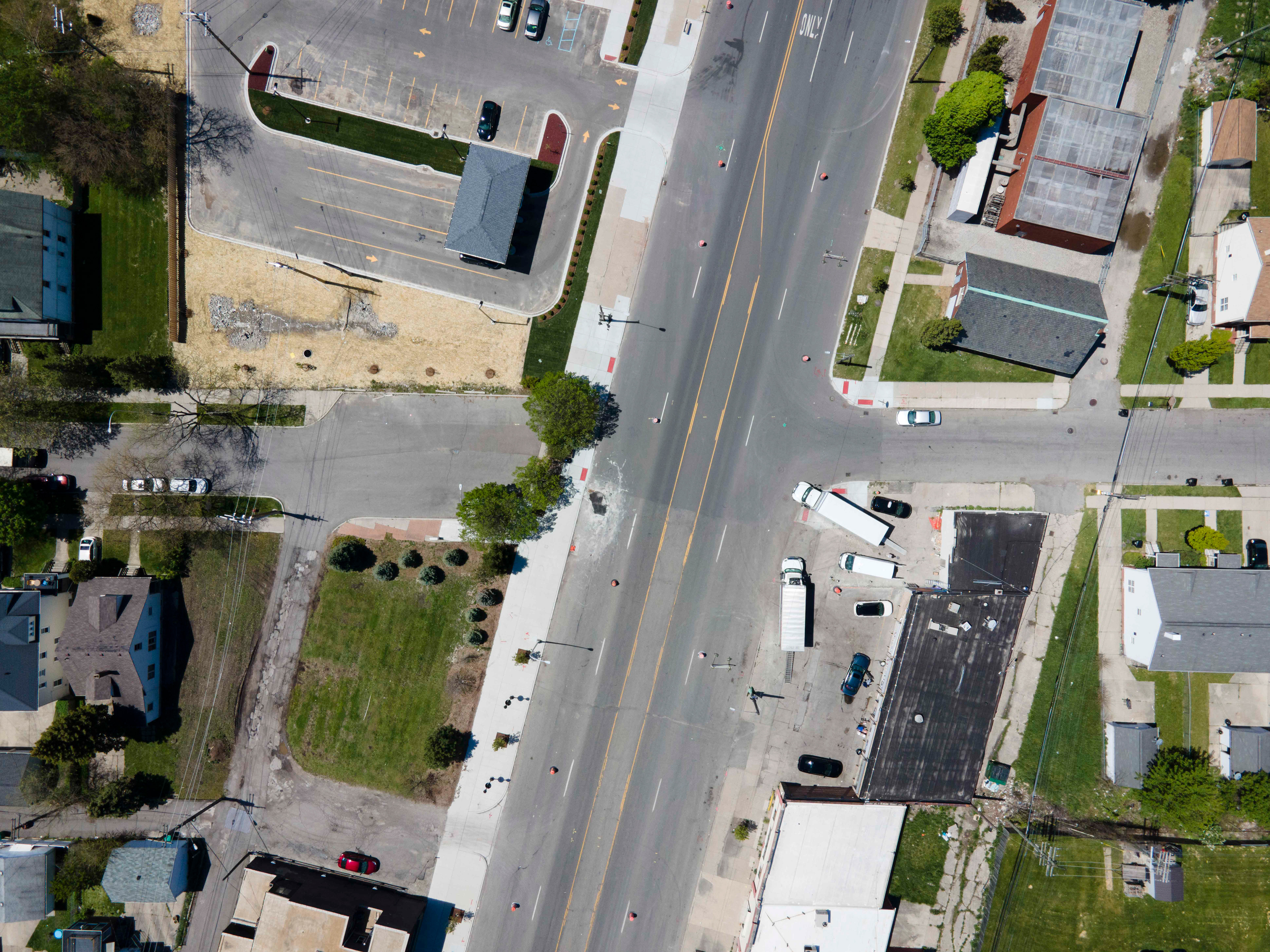
Mack Ave and Wayburn.
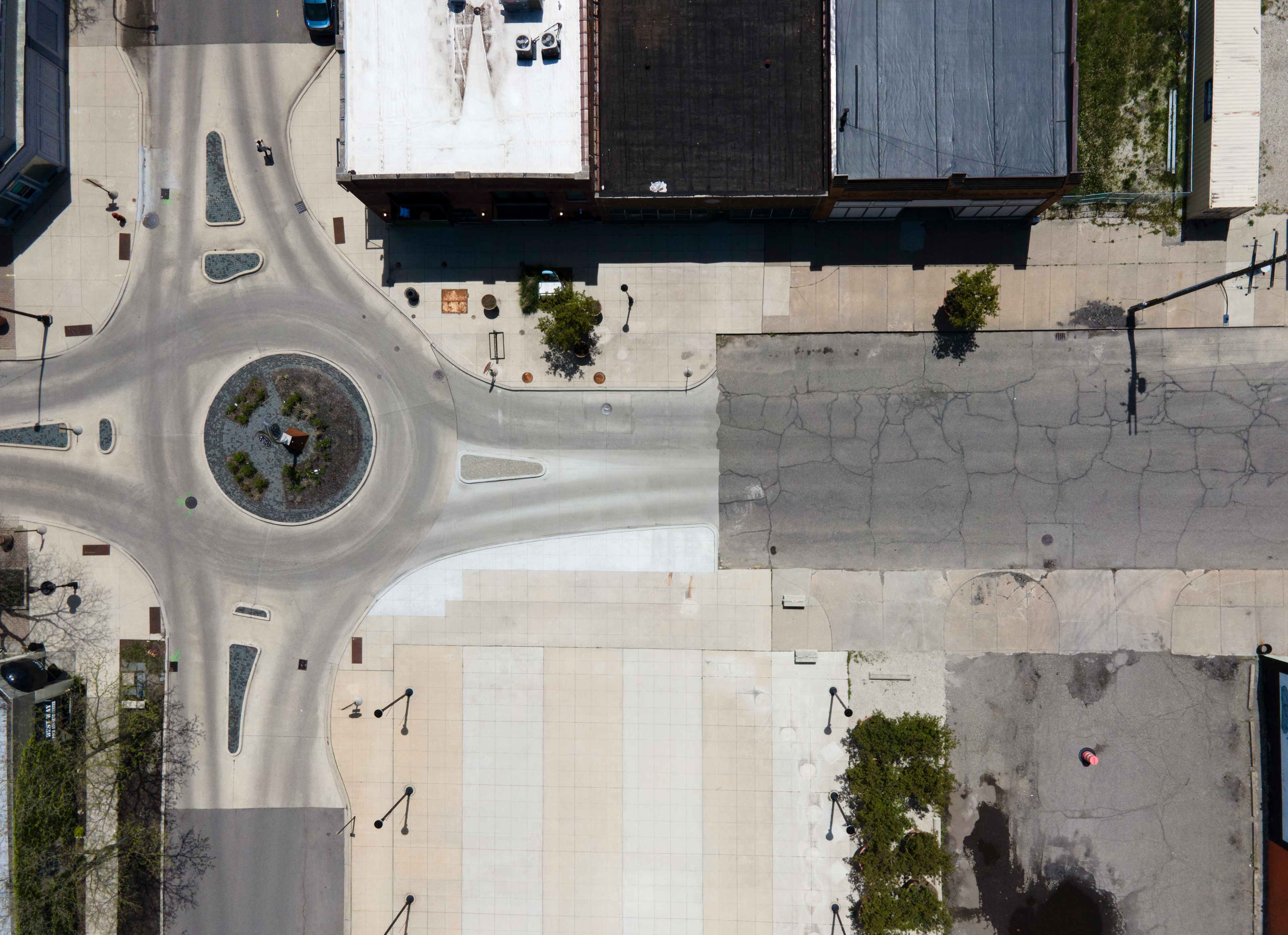
Kercheval where it meets Detroit.
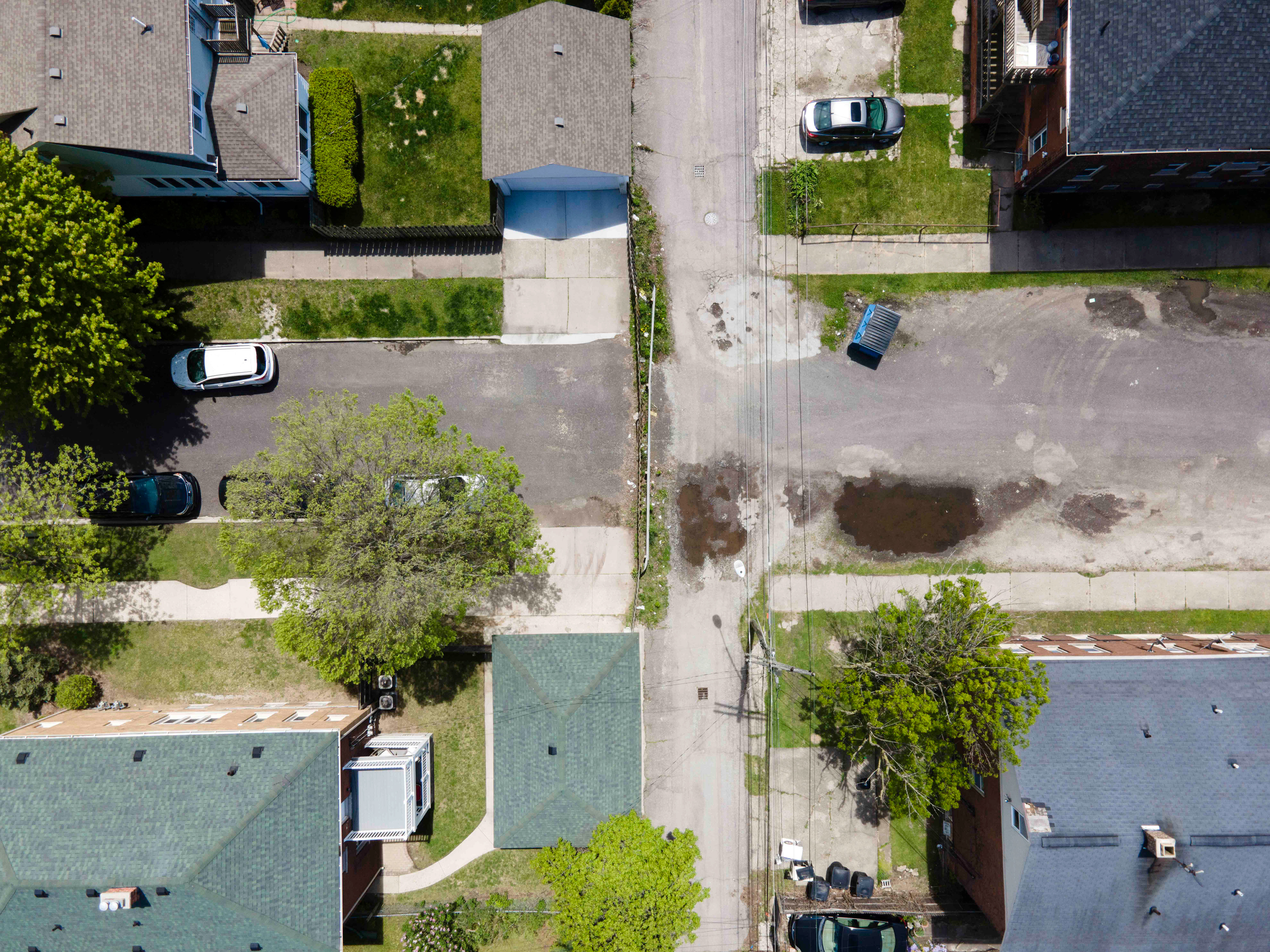
Brooks where it meets Detroit.
(Above) It's easy to see the moment Kercheval Road crosses into Grosse Pointe Park from Detroit.
(Below) Three walled-off streets that once connected the two communities.
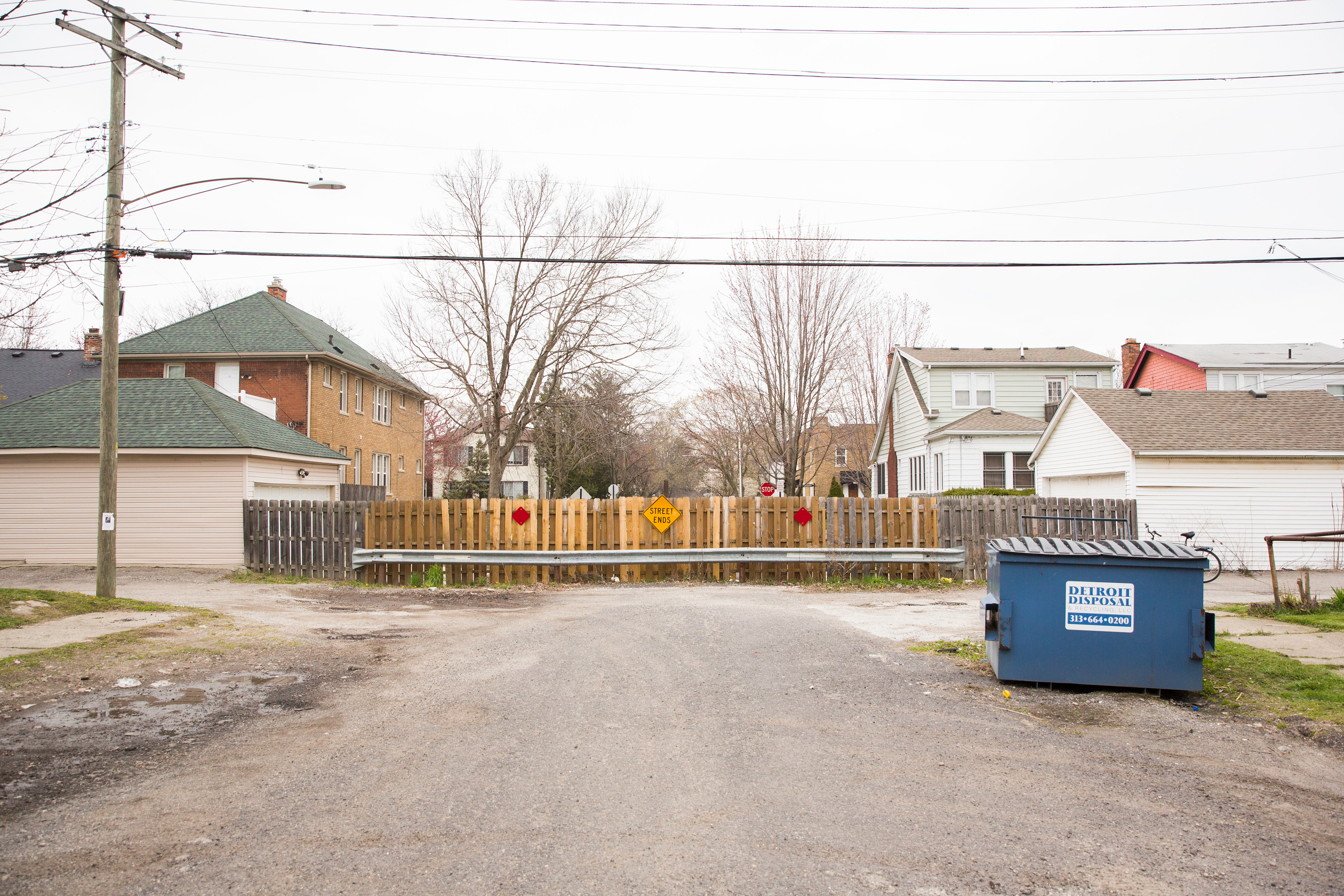
Brooks Rd. (as seen from Detroit)
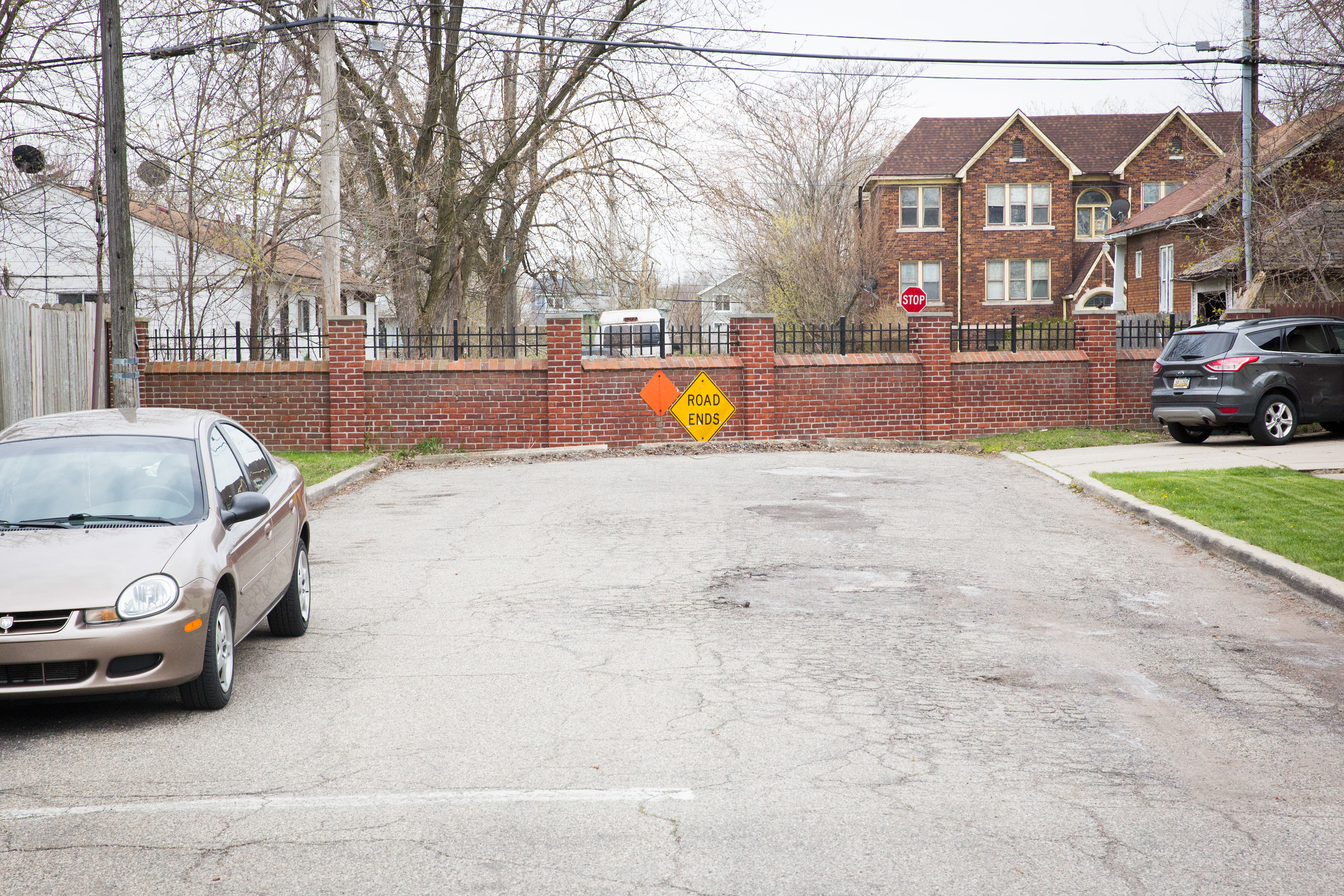
Goethe Ave (as seen from Grosse Pointe Park)

Korte Ave (as seen from Detroit)
The end of Fox Canal, looking towards the Detroit River. On the left is the private beach accessible only through Grosse Pointe Park. On the right, Mariner's Park, open to all.
A natural foods market and yoga studio are just two of the businesses within Grosse Pointe Park, just two blocks from the controversial Kercheval Ave. roundabout (visible in the background).
(Above) The Wall, a concrete barrier in 8 Mile, Detroit, built to divide black and white neighborhoods.
(Below) The area now is almost all black, and the wall is seen as a monument to a failed policy of segregation.
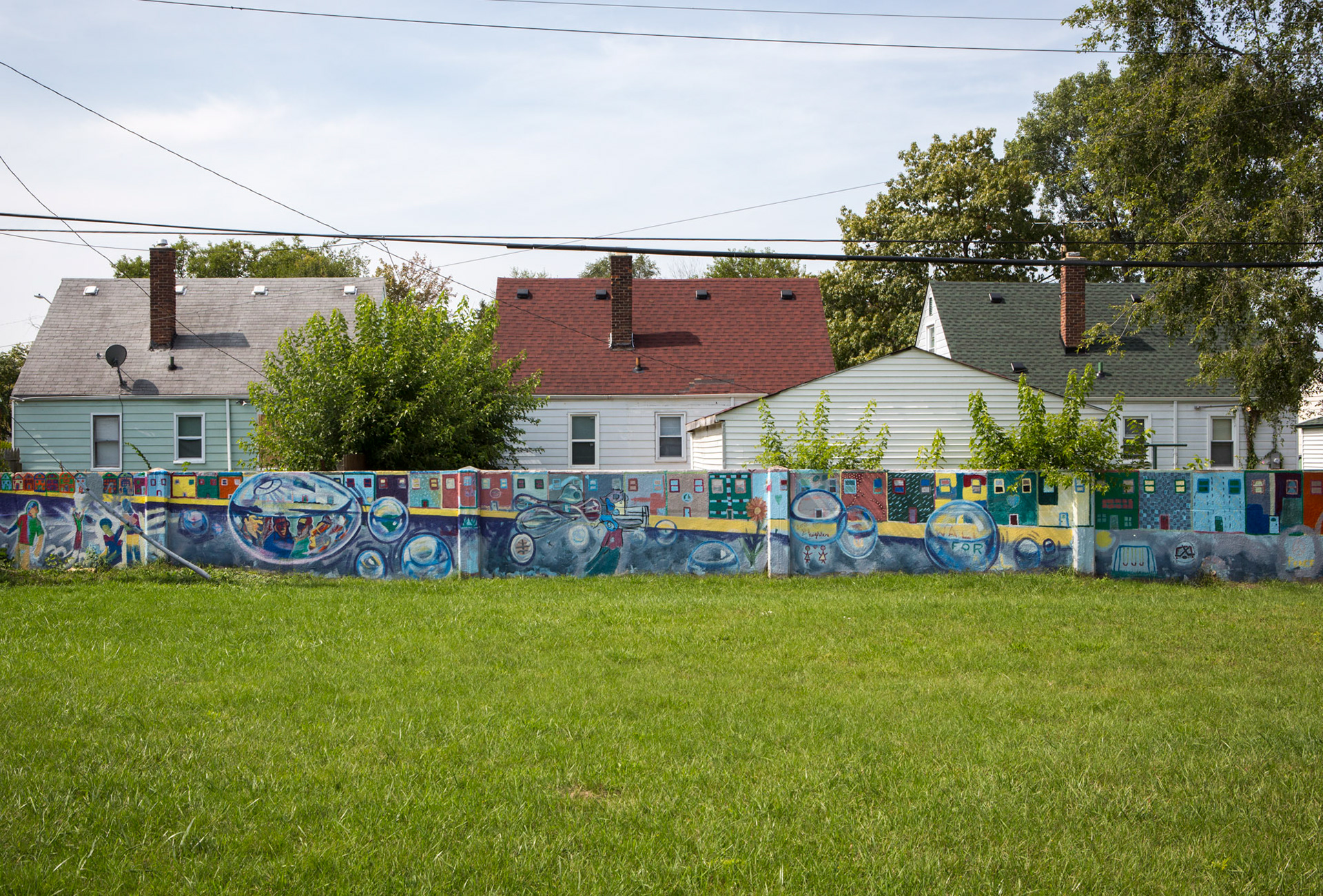


(Above) Black Bottom used to be a vibrant African-American neighborhood, but that was before redlining, the construction of I-75, and decades of neglect decimated the area. Now it is like so many other parts of Detroit - a skeleton of cracked concrete, weeds, and emptiness.
The original HOLC (Home Owner's Loan Corporation) redlining map of Detroit. Black Bottom is in the red zone, just northeast of downtown. (Note: Grosse Pointe is the green area in the far east of this image.)
A series of aerial images I compiled from Wayne State University (possibly for the first time), showing the extent of the interstate construction in 1961. The construction of I-75/I-375 through Black Bottom is clearly visible to the northeast of downtown.
The I-75/I-375 interchange sits where Black Bottom used to be. Large areas surrounding the road, which used to house thousands of black families, are now empty fields.
A colorful mural stands at the site of the 1967 Detroit riot, alongside a road now known as Rosa Parks boulevard. “Murals in the community provide a perfect platform to welcome new and returning Detroit families to the city" writes Hubert Massey, the artist, "and to expose them to more than 50 years of history."
The Highland Park Ford Plant (which the land on the left is part of) was the world's first automobile plant to use a mechanical assembly line, and produced the Ford Model T from 1913 to the late 1920s. Now it's a partially an industrial park, partially a wasteland.
Jefferson Chalmers, while billing itself "one of the safest neighborhoods in Detroit", still struggles with blight, including this closed elementary school just blocks from Alter Road.




